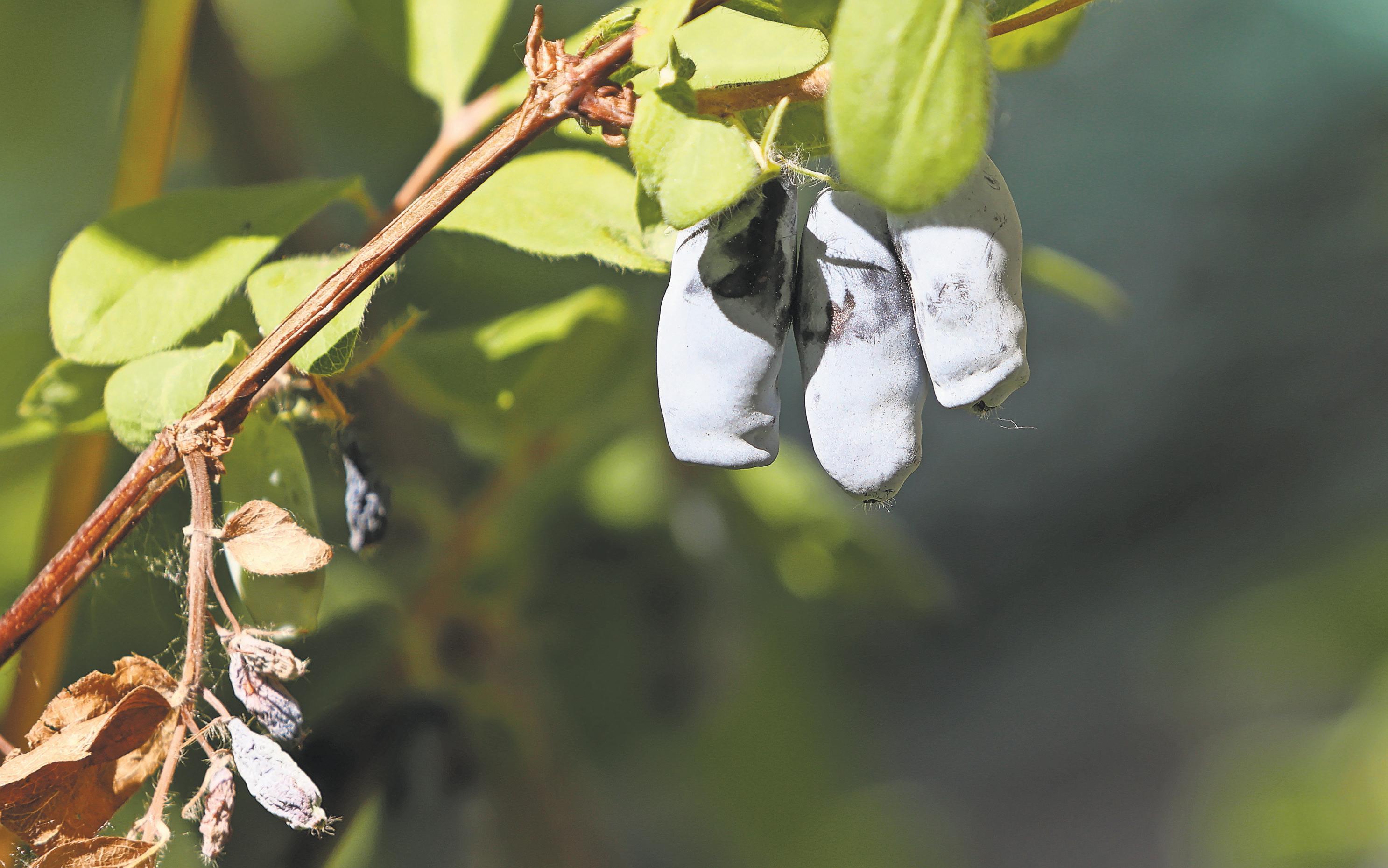
4 minute read
The fruiting shrub you didn’t know you needed
Honeyberries
The fruiting shrub you didn’t know you needed
Honeyberry is a winter-hardy fruit that grows on shrubs well-adopted to all soil types.

It’s my pleasure to introduce Bethany Anderson, who is writing a guest column this week. The Harvey, N.D., native and agricultural education major is a summer intern in the Cass County Extension Office at North Dakota State University. ~ Don Kinzler
By Bethany Anderson
You’ve heard of honey, and you’ve heard of berries, but have you heard of honeyberries?
Honeyberries are similar to blueberries in taste, health benefits, uses and color, although they’re not related, instead being in the same family as honeysuckle shrubs. These oblong berries have a slightly different flavor than blueberries, but they’re widely adapted to the varying soil types of the Upper Midwest, and blueberries require a highly acidic soil.
Honeyberries are fully winter hardy far into Canada and can survive summer heat as well. Sometimes used interchangeably, honeyberries are also called haskaps. The two different names resulted from varieties originating in Russia being referred to as honeyberries, and the varieties originating in Japan being called haskaps.
Types originating in

Growing Together
BY DON KINZLER Gardening Columnist
Russia and Japan have some key differences. Most research on the Russian varieties has been done at Canada’s University of Saskatchewan, where cultivars have been developed that are much sweeter than the originals. Research on Japanese varieties began in Oregon, and tend to produce larger berries than those from Russian origins, although they ripen two weeks later.
How do we grow honeyberries?
They are fairly low maintenance. Unlike blueberries, they thrive in the alkaline soils common in many parts of the Upper Midwest. Honeyberry shrubs will fruit best if planted in full, all-day sunshine, or at least six hours of direct sunshine. The shrubs fit into home landscapes well.
Two differently named cultivars of honeyberry are needed that bloom at the same time for pollination and fruiting. Plant shrubs about five to six feet apart. Mulch is recommended for weed control and for moisture conservation. Honeyberries grow best with one-to-two inches of moisture per week during the growing season, so supplementing rain with additional water might be necessary.
Avoid overhead sprinkling, because leaves staying wet or damp for long periods of time can cause the leaves to develop disease. A drip system that keeps the soil moist and the foliage dry is a better option.
Honeyberry shrubs begin producing berries in two to three years. Depending on the variety, the shrubs will grow 4 to 6 feet high. Yellowish-white funnel-shaped flowers appear in early spring with berries following in early summer, usually June into early July.
Berries will turn dark blue, appearing to be ripe, but shouldn’t be picked at that stage, since honeyberries turn color about two to three weeks before they are fully ripe. A better way to know if berries are fully ripe for picking is how easily they come off the stem. When ripe, berries will fall from the branches. In fact, a common method of harvesting is to place a tub or tarp underneath the shrub and shake it, allowing the berries to fall and be caught.
Ripening honeyberries are especially susceptible to theft from birds. Shrubs can be protected by covering with bird netting as the berries begin turning color.
How can berries be used, once the shrubs have started producing?
Honeyberries have a flavor that some people compare to a cross between a blueberry and a raspberry or black currant.
Like other characteristics of honeyberries, the sweetness largely depends on the cultivars planted. Even if some are slightly tart for fresh eating, they are wonderful in pies, bars, jam, wine, smoothies, ice cream or dried like raisins. Honeyberries can be substituted into nearly any recipes calling for blueberries. The fruits are high in vitamin C, antioxidants and minerals like potassium.
Now that you know about honeyberries, the next step is to visit your local garden center, looking for potted honeyberry shrubs. You’ll see honeyberry cultivar names like Tundra, Aurora, Borealis, Indigo Gem, Berry Smart, Boreal Beast and Boreal Beauty. Be sure to check the descriptive tags so the varieties are listed as being good pollinators for each other, and remember that two or more different cultivars are needed for pollination and fruit.
MICHAEL VOSBURG / FORUM PHOTO EDITOR
Don Kinzler, a lifelong gardener, is the horticulturist with North Dakota State University Extension for Cass County. Readers can reach him at kinzlerd@casscountynd. gov or call 701-241-5707.
New Transitional Care Unit
Green Pine Acres Skilled Nursing Facility Long Term Care & Short Term Stay Rehabilitation Woodside Manor Assisted Living Assisted Living with Services Green Pine Acres Adult Day Services
You can count on Greenwood Connections to provide only the highest quality of care for yourself or your loved one


